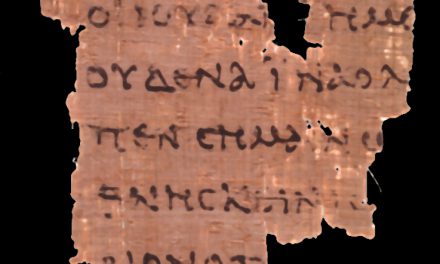Have you ever felt embarrassed by the Song of Solomon? Have you ever felt unsatisfied by over-spiritualizing the Song of Solomon? Have your ever thought why this book is a part of the Bible? Then you have not understood what the story of Song of Solomon is. Read this excerpt from Walter C. Kaiser Jr.’s book The Old Testament Documents.
Shulammite, Shepherd girl from the city of Shunem, was tending the vineyards and the nut orchards in the valley of Jezreel by the great road that ran through that area when she noticed Solomon’s entourage passing through (Song 6:11-12). When she ran to see this caravan with all the princely people and Solomon being carried on a palanquin born by sixty men, her natural impulse was to run away. But the people in the procession called to her and urged her to “come back” (Song 6:13). Thus, a shepherd girl, swarthy from working in the fields of her brother’s vineyard, was somewhat forcibly taken to Jerusalem to be prepared by others called the daughters of Jerusalem (Song 6:9-10).
As the book begins, Solomon is promising this Shulammite maiden anything her heart desires, while she, instead recalls her beloved back home in the fields (Songs 1:1-2:7). She dreams her boyfriend from the country-side visits her (Song 2:8-3:5). Meanwhile Solomon puts on the pressure trying to woo her with embarrassing terms of affection (Song 3:6-4:7) but she is unmoved (Song 4:8-5:1). It is this passage that the connection with Proverbs 5:15-23 appears, for the fountain, garden, and spring themes reappear with the same meanings of sexual intimacy; the same writer is often credited with writing both Proverbs and Song of Solomon. Once more the maiden dreams about her lover back home (Song 5:2-6:3) while Solomon makes one more effort to win her (Song 6: 4- 7:9), but all to no avail as the maiden longs all the more for her absent lover (7;10-8:3). Finally the maiden is released and she returns home to her lover and is united to him in marriage. (Song 8:4-14).
The oft-repeated theme is “My beloved is mine and I am his (Song 2:16, 6:13, and 7:10). This is an expression of the tenderness that the Shulammite maiden and the shepherd boyfriend have for each other.
But what about Solomon? Indeed, his presence is magnificent; a column of smoke, a palanquin made of wood from Lebanon (supports of silver, back of gold, seat of purple and its interior of inlaid ivory) borne by the sixty valiant men (Song 3:6-11). Solomon also has an ode given over to his physique in Song 5:10-16, but the Shulammite maiden has three such odes praising her beauty, all dedicated to her (Song 4:1-7, 6:4-9, 7:1-8).
So what is the point of the Song for moderns? It is meant to show how God meant marital love to be invincible, intimate, intense, indestructible, and ineluctable (Song 8:5-7). Marital love within the marriage bond is not a secular or embarrassing act, but a gift from the creator who formed both the human physique and the physical and emotional desire of husband and wife for each other.
Should someone, such as the extraordinarily wealthy King Solomon, attempt to quench it or to purchase this love with gifts, it would be utterly despised. It is just impossible to wash it away or to extinguish it (Song 8:6-7). Ask Solomon: he tried and lost. And the Spirit of God has him record how badly he lost even with all the anticipated gifts of the wealth he had gathered and the promises he proffered. Thus, what Jesus who is the Living Word, did for marriage by attending the marriage feast in Cana in John 2, so the written word now does in the Song of Songs (i.e., the best of all songs). Scripture does this by elevating the sanctity of marriage in the dace of this would-be intruder and finally loser-Solomon.
If you like this, send this link to as many as friends you can. Let everyone be edified.
{moscomment}





Solomon’s confession: Song of Solomon was written by Solomon and was his greatest song, which we would classify as a musical. It contained music, singing, and dancing. Solomon is the villain; and the Shulamite Woman is the heroine. In the plot, Solomon takes the Shulamite Woman as a captive and adds her to his harem. She is the most beautiful woman that Solomon ever saw. Moreover, she was the closest to a Right Woman that he ever found. She had a Shepherd Lover, who was her Right Man. And she was black (SOS 1:5). Now, many commentators dance around this issue with all the nuances. Some say she was shady. Others say that she just had a suntan. Others say that she was not an Ethiopian black. Though, the Bible does not say that she was an Ethiopian. However, it does say she was black as the tents of Kedar, which are usually made of black goats hair. She was black (Hebrew word, rj)v*shachor) and she was alluringly beautiful (Hebrew hw@#an* , na’veh).
The Shulamite Woman was taken captive by King Solomon when she was a young virgin, probably about 16 years old, whom Solomon found when he was out in the country touring his vineyards. Though she was kept captive by the Great King Solomon in his herem, neither Solomon’s wealth nor his charm or wisdom could lure her. Rather, she could never get over the love for her Right Man, her Shepherd Lover. So she escaped from Solomon’s harem in a daring rescue by her brothers. Solomon to forget the loss turned around and married another princess, a young belly dancer, and lived unhappily ever after. The Shulamite Woman was united with her Shepherd Lover, her Right Man, and lived happily ever after.
While the article is good, the comment goes overboard. Where is it mentioned that Solomon married a belly dancer? I just wanted to know whether the site administrators publish any comments they get or do they have a policy
Hi Bro, we certainly do have a policy. The policy is to publish all comments as long as it is not abusive. As Christians, we will believe in freedom of expression and reasoning together. So we publish all comments even if we do not agree with them or are meant to refute us. Administrators
The excerpt is just one of the numerous interpretations given by scholars. There are many other ways in which the scholars interpret, “Song of Song.” without contradicting the scripture.
The 3 popular ways of interpreting Song of Songs would be…
1. Literal – belief that it should be interpreted literally line by line in its historical setting.
2. Allegorical – thinking that King Solomon symbolized Jehovah’s love for Israel or Jesus Christ’s love for the Church, the Bride. These give the book higher spiritual meaning and canonical recognition but fail to accept the historical reality of the events.
3. Typical – thinking that it contains types, e.g. Solomon as the type of Jesus Christ and the Shulamite woman as type of the Church.
Comment 1 is an interpretation offered by students of literature. Where they study Song of Song as a work of art and poetry.
We must agree that Song of Songs is excellent poetry, much better then Shakespeare.
did solomon marry the shulamite woman,if so where is it found?thanks